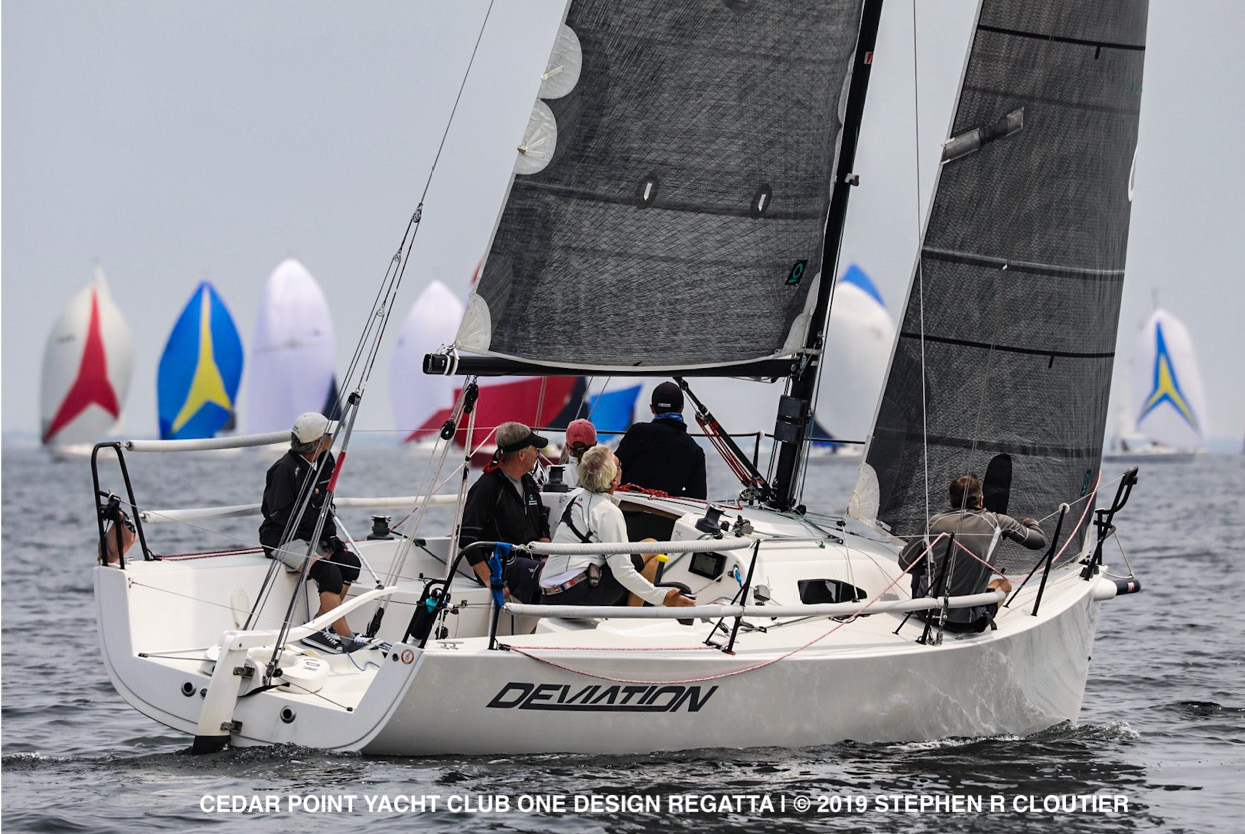It has become commonplace, in many fleets during recent years, to sail windward-leeward courses with a gate for the leeward mark. Personally, I like this course a lot because it emphasizes tactics and strategy, eliminates reaching parades (particularly in light and moderate air) and keeps the fleet closer together.
But racing with a gate offers a whole new set of tactical and strategic challenges. It means you must make a choice about which mark to round, and you have to figure out a whole new way of approaching the leeward mark. In order to have a successful gate rounding, you must look out for three important things. First, which side of the next beat is favored? Second, which side of the gate is on a higher “ladder rung”? And third, where are all of your competitors going?
1) Find the favored side.
Think ahead about the next beat and make your best guess about which side of that leg is favored. If all other things are equal, you should round the gate mark that is closer to that side so you can get there as quickly as possible. You can (and should) do this planning well before you get near the leeward gate. This way your strategy will be in place early and you can focus on tactics as you get closer to passing through the gate.

After rounding the leeward mark, you must be aware of the boats that are still sailing downwind as they will cause disturbed air and bumpy water and may have the right of way. Be sure you look ahead and try to plan the least painful way to sail through the fleet that is still on the run. © Stephen R Cloutier
2) Look for a higher ‘ladder rung’.
A leeward gate, like the start and finish lines, should be set square to the wind so both marks are on the same ladder rung (imaginary line that’s perpendicular to the wind direction). If the gate is not square, one of its buoys will be farther to windward. When you’re approaching on a run, this windward end is closer, so therefore it is “favored.”
One of your goals, as you sail downwind toward the gate, is to figure out which side of the gate is more upwind. This can be tough to see from far away, so try to get as close to the gate as possible before you commit to either side (do this by staying in the triangle formed by the laylines.
One good way to determine the favored side of the gate is by watching the boats that get there before you. Most of them, especially the leaders, will go around the better gate mark. Be careful if a gate is set with two buoys that are differ- ent in size or appearance. This can make it more difficult to judge which mark is closer because the smaller mark looks farther away.
3) Watch for traffic flow.
One of the toughest challenges at any leeward mark is finding clear air. It’s not fast to start the next leg right behind several other boats, so at a leeward gate, think about rounding the mark that has fewer boats just in front of you. Of course, if all the boats ahead of you are rounding one side of the gate, they probably have a good reason. But sometimes the advantage of clear air is worth going to the “wrong” mark.
In order to pick the road “less traveled,” you must usually wait until just before you reach the gate so you can see where the boats ahead of you commit. This means you should stay inside the layline triangle as long as possible so you can go to either mark at the last moment without overstanding. In addition, your crew must be ready to round in either direction. ■
This article originally appeared in David Dellenbaugh’s Speed & Smarts, The newsletter of how-to tips for racing sailors. If you want to sail faster and smarter, log onto SpeedandSmarts.com.




